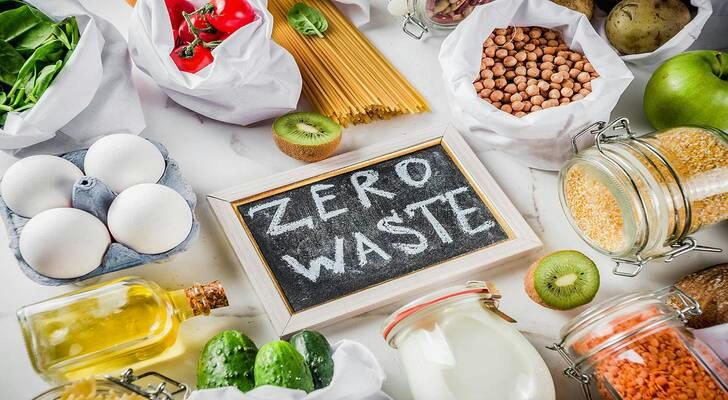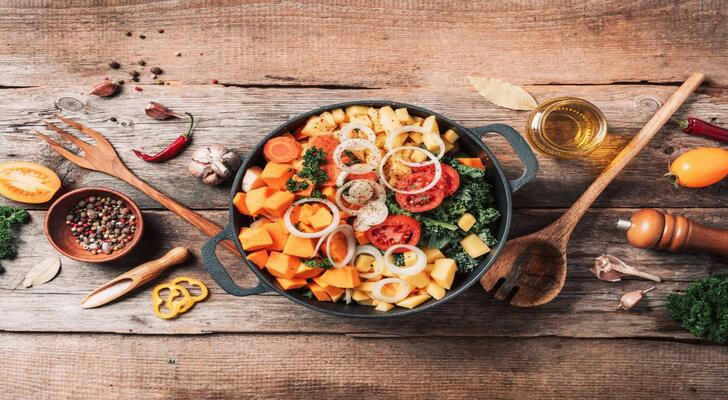The Zero-Waste Cooking Technique System: A Sustainable Culinary Revolution
In an era where environmental consciousness is increasingly pivotal, the concept of zero-waste cooking has emerged as a beacon of sustainability in the culinary world. This approach not only addresses the pressing issue of food waste but also revolutionizes the way we prepare and consume food. By adopting a zero-waste cooking technique system, we can significantly reduce our ecological footprint while enjoying delicious and nutritious meals. This system encompasses a range of practices that prioritize the efficient use of ingredients, minimize waste, and promote a more circular approach to cooking.

The Urgency of Addressing Food Waste
Food waste is a global crisis with far-reaching environmental, economic, and social implications. According to the United Nations, approximately one-third of all food produced for human consumption is lost or wasted, amounting to about 1.3 billion tons per year. This staggering figure highlights the urgent need for innovative solutions to tackle food waste at every stage of the food supply chain, from production to consumption. In the context of cooking, a significant portion of food waste occurs in households and restaurants due to improper planning, over-purchasing, and inefficient use of ingredients. The zero-waste cooking technique system aims to address these issues by promoting practices that maximize the utilization of ingredients and minimize waste. By adopting this system, we can contribute to a more sustainable food system and help mitigate the environmental impact of food waste.
Planning and Organization: The Foundation of Zero-Waste Cooking
Effective planning and organization are the cornerstones of the zero-waste cooking technique system. Before embarking on any cooking endeavor, it is essential to take stock of the ingredients already available in the pantry, refrigerator, and freezer. This practice helps to avoid over-purchasing and ensures that existing ingredients are used before they spoil. Creating a detailed meal plan for the week or month can also help in reducing food waste by ensuring that all ingredients are utilized efficiently. When planning meals, consider incorporating versatile ingredients that can be used in multiple dishes, such as vegetables, grains, and proteins. Additionally, organizing the kitchen space in a way that promotes visibility and accessibility of ingredients can encourage better usage and reduce the likelihood of items being forgotten and eventually discarded.
Utilizing Every Part of the Ingredient
One of the key principles of zero-waste cooking is the utilization of every part of the ingredient. This approach not only reduces waste but also enhances the flavor and nutritional value of dishes. For example, vegetable scraps such as carrot peels, onion skins, and celery leaves can be collected and used to make a flavorful vegetable broth. Similarly, fruit peels and cores can be repurposed into jams, preserves, or infused waters. When it comes to proteins, using the entire animal or plant-based protein source can yield multiple dishes. For instance, a whole chicken can be used to make a roast dinner, and the leftover bones can be simmered to create a rich and nutritious bone broth. In the case of plant-based proteins, such as beans and lentils, the soaking liquid can be used as a substitute for egg whites in baking recipes. By embracing the philosophy of using every part of the ingredient, we can transform what would otherwise be considered waste into delicious and nutritious components of our meals.

Creative Recipe Adaptation and Innovation
The zero-waste cooking technique system encourages creativity and innovation in the kitchen. Instead of strictly adhering to traditional recipes, cooks are invited to adapt and modify recipes based on the ingredients they have on hand. This flexibility allows for greater resourcefulness and reduces the need to purchase additional ingredients that may not be fully utilized. For example, if a recipe calls for fresh herbs that are not available, one can substitute with dried herbs or even experiment with different herb combinations to achieve a similar flavor profile. Similarly, if certain vegetables are missing, one can use alternative vegetables that are in season or already in the pantry. This approach not only reduces waste but also fosters a deeper understanding of flavor profiles and ingredient versatility. Additionally, experimenting with new recipes and techniques can lead to the discovery of unique and delicious dishes that make the most of available ingredients.
Preservation Techniques: Extending the Life of Ingredients
Preservation techniques play a crucial role in the zero-waste cooking technique system by extending the life of ingredients and reducing the likelihood of spoilage. Methods such as canning, pickling, fermenting, and freezing can be employed to preserve fruits, vegetables, and other perishable items. For example, excess fruits can be turned into jams or preserves, which can be stored for months and used as spreads, toppings, or ingredients in baking. Vegetables can be pickled or fermented, adding a tangy and flavorful twist to dishes while also preserving their nutritional value. Freezing is another effective method for preserving ingredients, especially for fruits and vegetables that are in season. By freezing produce at their peak freshness, they can be used later in smoothies, soups, or stir-fries. Learning and applying these preservation techniques not only reduces waste but also allows for greater enjoyment of seasonal ingredients throughout the year.

Composting: Closing the Loop
Even with the best intentions and practices, some food waste is inevitable. However, the zero-waste cooking technique system emphasizes the importance of composting as a means to close the loop and turn waste into a valuable resource. Composting is the process of breaking down organic matter into nutrient-rich compost, which can be used to enrich soil and support the growth of plants. By composting food scraps such as vegetable peels, fruit cores, and coffee grounds, we can divert these materials from landfills and create a sustainable cycle of nutrient recycling. Composting not only reduces the environmental impact of food waste but also promotes healthier soil and more sustainable agricultural practices. Incorporating composting into the zero-waste cooking system is a crucial step in achieving a truly circular and sustainable approach to food.
The Role of Education and Community in Zero-Waste Cooking
The success of the zero-waste cooking technique system relies not only on individual efforts but also on education and community engagement. Educating people about the principles and practices of zero-waste cooking can inspire and empower them to adopt more sustainable habits in the kitchen. Workshops, cooking classes, and online resources can provide valuable information and guidance on how to plan meals, utilize ingredients efficiently, and apply preservation techniques. Additionally, community initiatives such as food swaps, where individuals can exchange surplus produce and homemade goods, can foster a sense of collaboration and reduce waste on a larger scale. By sharing knowledge, resources, and experiences, we can build a more sustainable and resilient food culture that values the principles of zero-waste cooking.
The Future of Zero-Waste Cooking
As awareness of environmental issues continues to grow, the zero-waste cooking technique system is poised to become an integral part of the culinary landscape. The principles of planning, ingredient utilization, creative adaptation, preservation, and composting offer a comprehensive approach to reducing food waste and promoting sustainability in the kitchen. By embracing these practices, we can contribute to a more circular and regenerative food system that benefits both the environment and our well-being. The future of zero-waste cooking lies in its ability to inspire innovation, foster community engagement, and drive systemic change in the way we produce, consume, and dispose of food. As more individuals, restaurants, and institutions adopt zero-waste cooking techniques, we can collectively work towards a future where food waste is minimized, and every ingredient is valued and utilized to its fullest potential.
In conclusion, the zero-waste cooking technique system represents a transformative shift in the way we approach cooking and food consumption. By prioritizing the efficient use of ingredients, minimizing waste, and promoting sustainable practices, we can create a more resilient and environmentally friendly food system. The principles of planning, ingredient utilization, creative adaptation, preservation, and composting offer practical and effective strategies for reducing food waste and embracing a more circular approach to cooking. Through education, community engagement, and individual action, we can collectively work towards a future where zero-waste cooking is not just a trend but a fundamental aspect of our culinary culture.
